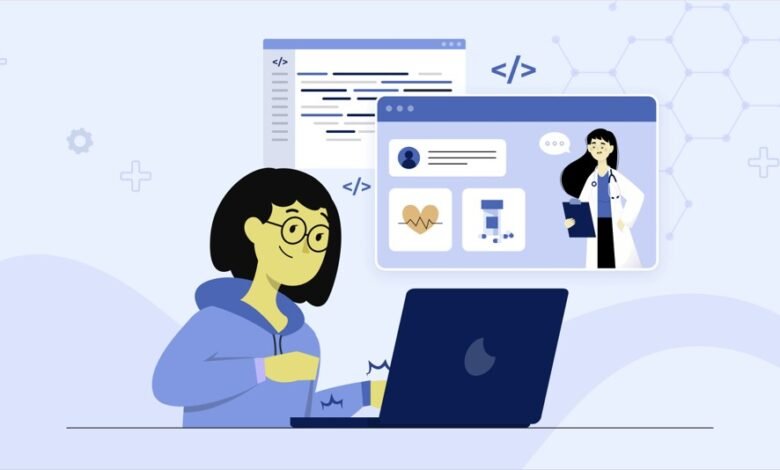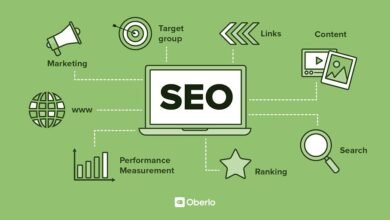Top 7 Healthcare Web Development Trends For 2023

Whatever the new technology, it must make life easier for the user and be user-friendly in every way. The healthcare sector is constantly changing, and new web development ideas and technologies are appearing daily.
Numerous healthcare products are currently on the market, and the number of these products is always growing thanks to new advancements made by healthcare web development businesses. Keeping up with the most recent trends has therefore become essential. To ensure that healthcare is available to everyone, the technology and systems used in healthcare must be user-friendly.
Read More: Top 7 Healthcare Web Development Trends For 2023
1. Digital Therapeutics (DTx)
With patient-facing apps that aid in the management, prevention, and treatment of specific diseases, Digital Therapeutics (DTx) technology directly benefits patients. The technology enables patients to self-manage their symptoms and enhance their general health, supporting patient-centered care.
It tracks and comprehends the patients’ behavioral changes using digital healthcare solutions tools like sensors, cellphones, and other similar electronic tools, and then suggests the necessary adjustments. In the coming years, DTx use will increase.
2. Voice User Interfaces
Physical contact becomes a thread in pandemics. The COVID-19 pandemic is one such illustration. Deadly viruses can spread through physical contact with other persons or items. The voice user interface is now the safest choice because it functions flawlessly without any physical interaction.
Through speech controls and voice commands, the Voice user interface enables contact-free communication. It is the ideal technology for contact-free operations, and the likelihood of disease transmission is eliminated.
3. AI And Chatbots
Everyone must bring up artificial intelligence whenever discussing advancements in healthcare web development or any other area of technology (AI). The advantages that technology is bringing to various industries are astounding. In the healthcare sector, it delivers enormous benefits by displacing human helpers.
Based on the patient’s medical background and extensive research, AI technology assists in providing guidance. Additionally, it offers touchless medical solutions. Additionally, artificial intelligence can be used to gather and analyze the most accurate medical data, saving time and effort for medical practitioners.
Read More: Importance Of Mean Stack Developments All Over The World
4. Virtual and Augmented Reality (VR)
The technological advancements that are assisting with many medical procedures are virtual and augmented reality. These technologies have previously established their value in other fields, and they are currently helping to advance and develop the medical sector. In order to effectively diagnose and treat their patients, doctors employ virtual reality (VR) to create 3D visualizations of a variety of patients.
With the use of this technology, many ailments can be treated without the need for surgery or other medical procedures. PTSD and anxiety, as examples. Through guided relaxation sessions, you can employ VR technology to relax a person.
Any medical gadget that uses AR can generate additional information about a patient, such as when doctors use it to find injectable veins. Contrarily, Augmented Reality has a greater chance of meeting the technology requirements of the medical industry.
5. Medical Wearables
In the past, hospitals and healthcare clinics were the only places to find medical supplies and equipment. You needed to make an appointment and go to a local clinic even to check your blood pressure or blood sugar levels. Today, however, people may check their blood pressure, blood sugar, and other medical parameters in the comfort of their own homes.
Devices that are convenient, portable, and easy to wear have made it conceivable. In recent years, these smart devices have grown in popularity. With a few clicks, anyone may now check their blood oxygen level or heart rate. The gadgets produce helpful data and assist users in making the necessary lifestyle adjustments.
6. Virtual Care and Telemedicine
The frequency of online consultations has significantly increased as a result of the covid-19 outbreak. In addition to providing care to a greater number of patients in their already jam-packed schedules, doctors are benefiting from telemedicine by reducing the danger of infection spread.
The emphasis on virtual treatment from any place has changed as a result of the integration of many technologies such as the Internet of Things, Data Analytics, Machine Learning, and Artificial Intelligence in healthcare web development. Healthcare personnel are now better equipped to treat their patients with greater efficiency and agility thanks to the deployment of robotic healthcare assistants.
7. Predictive Analysis
With regard to trends in healthcare web development, predictive analysis is essential. Applications made possible by data science that use predictive analytics on historical data help identify disease outbreaks in advance. Decisions based on data and informed by patient behavior, environmental factors, and diagnostic records aid in the creation of novel medications.
Conclusion
Healthcare web development businesses can enable the industry by integrating cutting-edge technologies like AI, ML, IoT, and business intelligence into healthcare applications. Your healthcare firm may deliver better patient care and management services by collaborating with a leading provider of healthcare web development services. Xavor Corporation is one such company. With more than 20 years of experience, Xavor assists healthcare organizations in creating patient-centered solutions.











